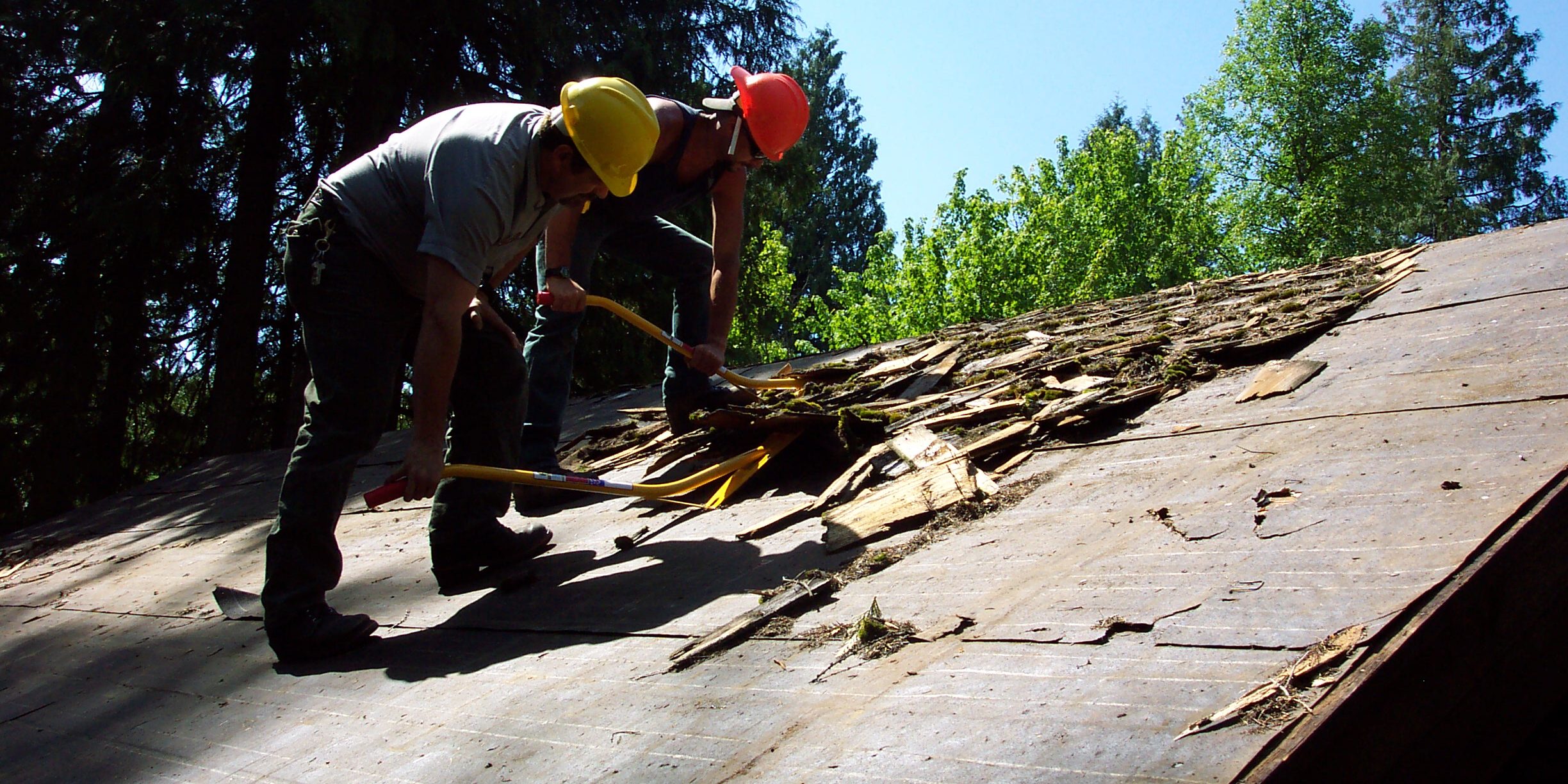Table of Contents
Filing a roof insurance claim is not easy, as it requires much knowledge and dedication. Understanding the rules and regulations, paperwork, filing dates, etc., is essential to ensure your claim is filed correctly and successfully. The following article outlines the steps you should take when filing a roof insurance claim.
How to File a Roof Insurance Claim?
- Document the damage: Take photos or videos of the damage to your roof and any other areas of your home that may have been affected.
- Review your insurance policy: Read your policy carefully to understand what is covered and any applicable deductibles.
- Contact your insurance company: Call your insurance provider to report the damage and start the claims process.
- Schedule an inspection: Your insurance company may send an adjuster to inspect the damage and assess the cost of repairs.
- Get repair estimates: Obtain estimates from reputable roofing contractors for the cost of repairs or replacement.
- Submit your claim: Once you have gathered all necessary documentation and estimates, submit your claim to your insurance provider.
- Wait for a decision: Your insurance company will review your claim and determine whether the damage is covered under your policy.
- Review the settlement offer: If your claim is approved, review it and ensure it covers the total cost of repairs or replacement.
- Choose a contractor: Select a reputable roofing contractor to complete the repairs or replacements.
- Follow up: Contact your insurance company and contractor to ensure that the repairs are completed to your satisfaction and that any additional issues are addressed.

The first step in filing a roof insurance claim is thoroughly reviewing your policy. Ensure you understand all the terms and conditions related to your coverage, such as what types of damage are covered and what kinds of deductible or co-insurance may apply. In addition, be sure to check for any exclusions or limits that may prevent or reduce your claims payment amount. Knowing exactly how much coverage you have will help make the rest of the process smoother.
Take Photos or Video Records
Please take photos or video records of any damage to your roof so that you can provide them when submitting your claim documents. This visual evidence can help establish the cause and extent of damages and prove that damage occurred due to events covered by your policy.
When filing a roof insurance claim, providing visual evidence of the damage to your roof is essential. Taking photos or video records of your roof can help support your claim and ensure you receive the coverage you’re entitled to. Here are some tips for taking pictures or video records of your roof correctly:
- Safety first: Before you begin, take all necessary safety precautions. If you need to climb onto your roof, use a sturdy ladder and wear appropriate footwear with good traction. Avoid going onto the roof if wet, icy, or slippery.
- Use a good camera: Use a camera with a good zoom lens or a smartphone with a high-quality camera. Ensure the camera has enough battery life and memory space to capture all the necessary images or videos.
- Take close-up shots: Take close-up shots of the damage to your roof. This includes any missing or damaged shingles, cracks, or other signs of wear and tear. Try to capture the damage from different angles and distances to ensure you have a comprehensive record of the damage.
- Take wide-angle shots: Take wide-angle shots of your entire roof to provide context and show the overall extent of the damage. This will help the insurance adjuster better understand the damage and determine the appropriate coverage.
- Take photos or video records of the interior: If there’s visible damage inside your home, take photos or video records of the affected areas. This includes any water stains on the ceiling, cracked drywall, or other signs of water damage.
- Include a timestamp: To document when the damage occurred, include a timestamp on your photos or video records. You can do this by setting the date and time on your camera or smartphone.
- Consider hiring a professional: If you’re uncomfortable climbing onto your roof or taking photos yourself, consider hiring a professional photographer or roofing contractor to document the damage.
Remember to store your photos or video records safely and make backups later. By following these tips, you can help ensure that your roof insurance claim is processed smoothly and that you receive the coverage you’re entitled to.
Document Roof damages clearly
Make sure you document any damages clearly in writing with dates, details, measurements, etc., so they can be used later in the claims process if necessary. Keep track of all receipts for repairs promised by contractors or other service providers, as these can also be submitted along with the claims paperwork (e.g., receipts for materials).
- Take notes: Take notes of the date and time of the damage, as well as any other relevant details, such as the cause of the damage, the weather conditions at the time, and any visible signs of water damage inside your home.
- Get a professional inspection: If you’re not sure of the extent of the damage or need an expert opinion, consider getting a professional inspection. A roofing contractor can assess the damage and provide a detailed report that you can use when filing your insurance claim.
- Keep all receipts: Keep all receipts for repairs related to the damage. This includes receipts for materials, labor, and any other related expenses. Make sure to keep them in a safe and organized place.
- Record all conversations: Record all discussions with your insurance company, including the date, time, and name of the representative you spoke to. Take notes of what was discussed, including any promises or agreements made.
- Keep a spreadsheet: Keep a spreadsheet or document to track all expenses related to the damage and repairs. Include the date, description, and cost of each payment.
Contact Your Insurance Carrier
Once you have adequately documented any damages done to your roof, contact your insurance carrier directly by phone or email, depending on their preferred method of communication. Explain clearly why you believe a claim should be filed and provide all relevant documents supporting this decision (photographs/video records/receipts) if applicable.
Complete All Claim Forms
Your insurance carrier will typically provide claim forms, which must be completed accurately before being submitted for consideration. Be sure all information on these forms corresponds precisely with what was explained during step 4 above; otherwise, the process could delay or even derail entirely due to discrepancies between verbal and written documentation (claims processing often relies heavily on written documentation).
Submit claim
After completing all required forms correctly and providing adequate proof/documentation supporting them (photos/video records), submit them directly, either via/email, depending on what method your insurer prefers at this time, so they can begin reviewing them promptly and efficiently.
Following Up With Your Claim Status
Regularly follow up with your insurance company after submitting claims paperwork so that there are no delays caused by waiting too long before checking back regarding its status – it is best practice not to wait more than 48 hours after submission without some update request (by phone call/email). Doing this allows both parties involved in processing the claim (insured & insurer) to remain organized and accounted for throughout each stage of the process until resolution is reached and funds are released accordingly if approved by the insurer’s side upon completion of the review phase(s).
Following these steps closely when filing a roof insurance claim will help ensure that all requirements are adequately met while ensuring timely completion; proper filing procedures were followed from start to finish, resulting in successful resolution from the insurer’s perspective – thus ultimately benefiting the insured party who has just suffered property losses due expensive repairs needed for their damaged roofs causing financial hardship usually associated with such unexpected events unfortunately sometimes unavoidable within our lives today…
